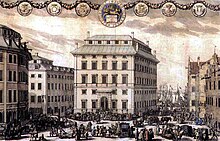1691 in Sweden
Sweden witnessed several historic and significant events and developments during 1691 that left lasting marks upon both their history and wider European context. Notable political, cultural and societal developments give insight into what life was like during this era for Sweden's Kingdom.
King Charles XI's Reign
By 1691, Sweden was under the rule of King Charles XI, who had come to power soon after inheriting it following his father, Charles X Gustav, dying suddenly at only 17 years of age in 1660. During this reign he initiated numerous reforms designed to centralize power within monarchy while consolidating control over nobility influence within state administration, ultimately moving closer towards an absolutist regime than any previous reign in its entirety.
Privilege Reduction Policy of Charles XI
One of the major accomplishments during Charles XI's first year was his successful implementation of his "Reduction" policy, intended to lessen Swedish nobility's vast land holdings and privileges amassed during previous reigns. Through its implementation, Charles reclaimed significant portions of land and resources under this initiative thereby strengthening royal finances while undermining traditional nobility power structures.
Economic and Financial Reforms
1691 saw Charles XI's efforts to strengthen both Sweden's economy and financial systems. He initiated measures such as increasing taxation efficiency and decreasing government corruption to create a more stable economic environment that allowed financing of military endeavors by the state. These reforms contributed significantly towards creating an effective environment in Sweden in which to carry out his projects such as reform of taxation systems or improve tax collection efficiency and reduce corruption within government institutions. These reforms made Sweden less dependent upon foreign currencies for finance as it provided for more stable financing of state initiatives such as military pursuits by countries abroad that otherwise depended upon imported sources - providing funds that helped finance various endeavors including military endeavors by states which used foreign reserves from around 70-80 countries for financing purposes as part of an initiative program which had begun shortly prior to 1691 when Charles XI initiated reform measures meant for strengthening both economy and its financial systems as part of an initiative program which strengthened Sweden economically as well as its financial systems by means. These reform measures had contributed towards creating an improved tax environment while simultaneously funding military endeavors through state institutions while simultaneously financing government endeavors both financially.
The Great Northern War and International Relations
1691 was an age of turmoil across Europe. One major source was the Great Northern War (1701-1721). Though no fighting had begun as of yet by this point in 1691, events leading up to it were already taking shape: Sweden under Charles XI was trying to maintain its influence while dealing with shifting alliances and power struggles across Northern Europe - something the war's outcome would significantly change the geopolitical landscape in its wake.
Cultural and Intellectual Scene
Sweden was marked by remarkable intellectual developments during 1691. Scholars and thinkers engaged in discussions that laid the groundwork for future intellectual movements while at the same time contributing to European discussions of this time period.
Religious Matters and Society
Religion was an integral component of Swedish life during 1691, with religious stability under the Church of Sweden having taken hold in society as part of everyday life including education and governance. Religious tolerance was slowly emerging as an issue that would change society norms going forward; an augury for what may happen next.
| Years in Sweden: | 1688 1689 1690 1691 1692 1693 1694 |
| Centuries: | 16th century · 17th century · 18th century |
| Decades: | 1660s 1670s 1680s 1690s 1700s 1710s 1720s |
| Years: | 1688 1689 1690 1691 1692 1693 1694 |


Events from the year 1691 in Sweden
Incumbents
Events
- - Barnängens manufaktur is established in Stockholm.[1]
- - The city of Jönköping burns down.
- - The crops fail all over Sweden.
- Sven Andersson (farmworker) is executed for having sex with a nymph.
- The theater company Dän Swänska Theatren is dissolved.[2]
Births
- March 28 - Charles Emil Lewenhaupt, general (died 1743)
- Christina Beata Dagström, glassworks owner (died 1754)
Deaths
This section needs expansion. You can help by adding to it. (June 2015) |
- Sven Andersson (farmworker) (born 1668)
References
- ^ Värdefulla industrimiljöer, Stockholms stadsmuseum, 1984
- ^ Dahlberg, Gunilla (1992). Komediantteatern i 1600-talets Stockholm. Stockholm: Komm. för Stockholmsforskning. ISBN 91-7031-038-6
